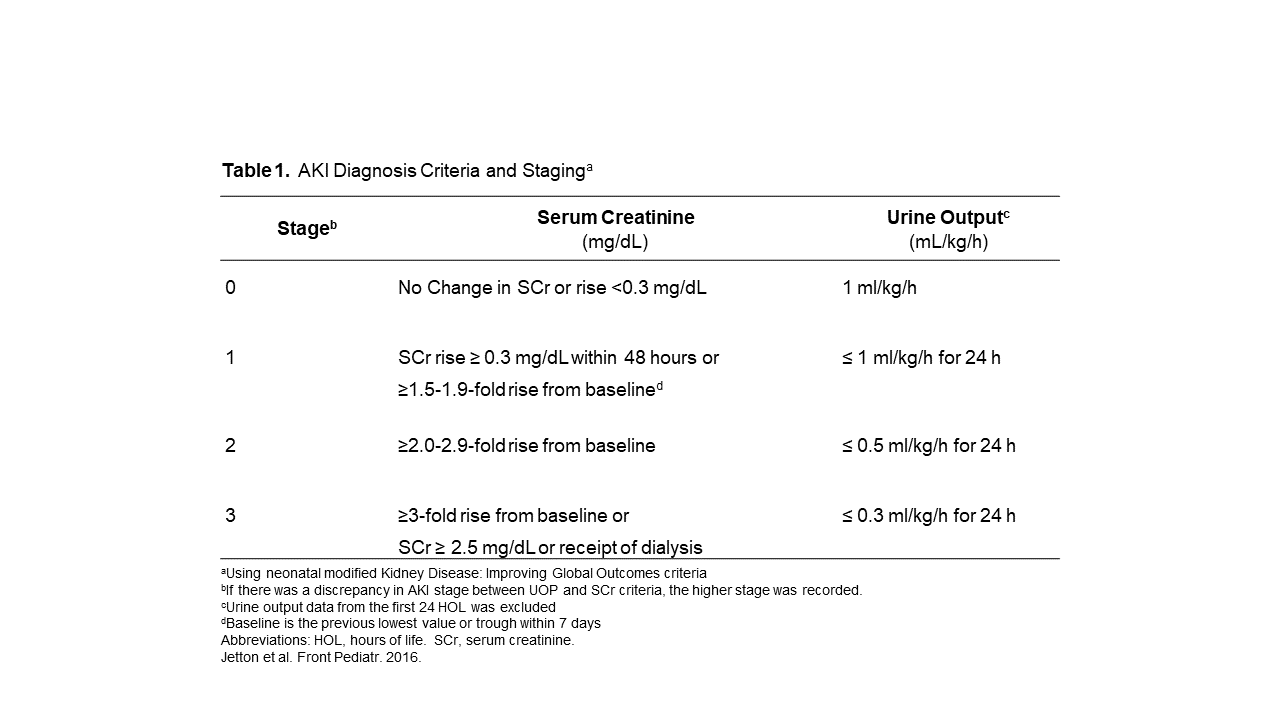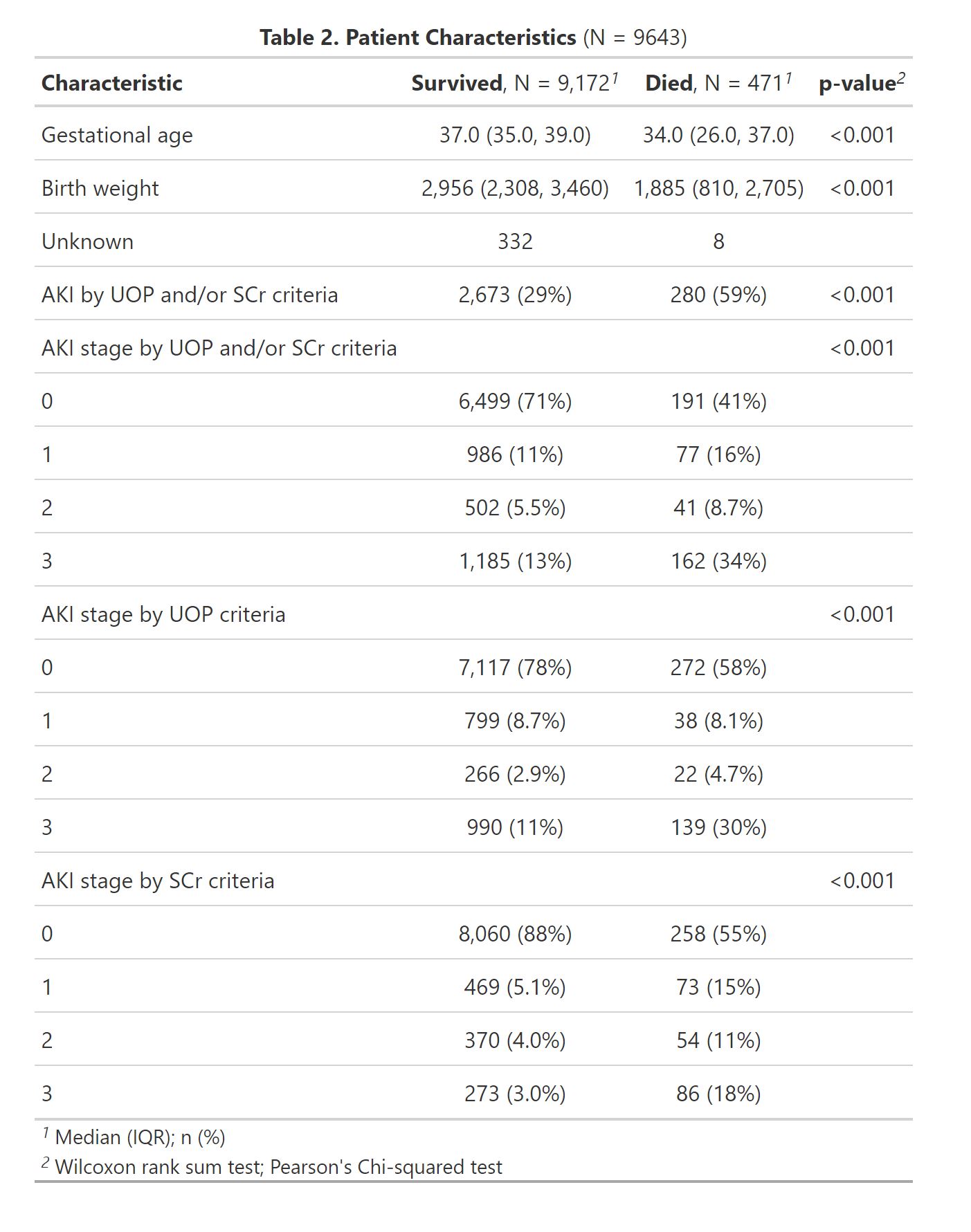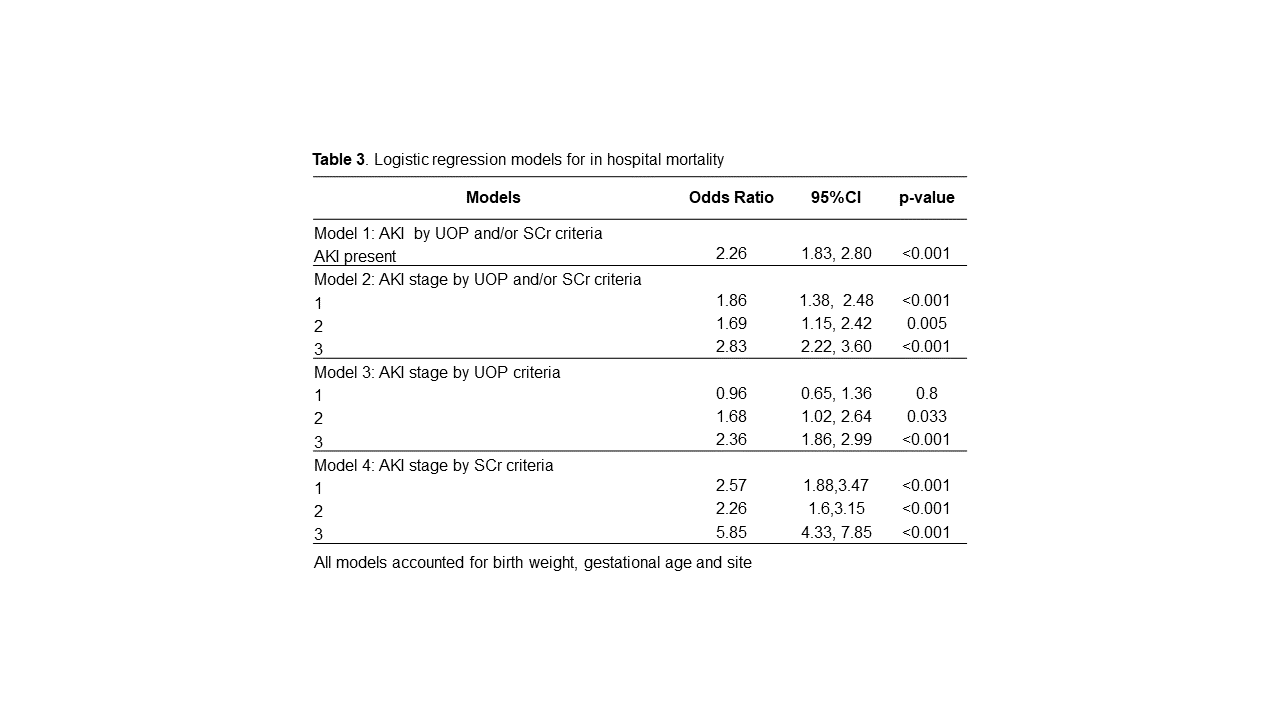Neonatal Nephrology/AKI
Neonatal Nephrology/AKI 1
218 - ADVANCE: Advancing care of neonates with acute kidney injury utilizing the Children’s Hospitals Neonatal Consortium Database
Saturday, April 29, 2023
3:30 PM - 6:00 PM ET
Poster Number: 218
Publication Number: 218.242
Publication Number: 218.242
Jennifer Rumpel, University of Arkansas for Medical Sciences College of Medicine, little rock, AR, United States; Sofia I. Perazzo, Childrens National Hospitla, Washington, DC, United States; Matthew Harer, University of Wisconsin School of Medicine and Public Health, Madison, WI, United States; Michelle C. Starr, Indiana University School of Medicine, Indinapolis, IN, United States; Rachel Han, Indiana University Health/Riley Hospital for Children, Indianapolis, IN, United States; Andrew M.. South, Wake Forest School of Medicine of Wake Forest Baptist Medical Center, Winston Salem, NC, United States; Tahagod Mohamed, Nationwide Children's Hospital, Columbus, OH, United States; Daniel S. Liu, University of Arkansas for Medical Sciences, Little Rock, AR, United States; Ashlyn Madding, Arkansas Children's Hospital, Little Rock, AR, United States; Tasnim Najaf, St. Louis Children's Hospital, St. Louis, MO, United States; Eileen A. Ciccia, Washington University in St. Louis School of Medicine, St. Louis, MO, United States; Mona Khattab, Baylor College of Medicine, Houston, TX, United States; Cara L. Slagle, Cincinnati Children's Hospital Medical Center, Cincinnati, OH, United States; Christine Stoops, University of Alabama at Birmingham, Birmingham, AL, United States; Mimily Harsono, University of Tennessee Health Science Center College of Medicine, Memphis, TN, United States; Jonathan Bona, University of Arkansas for Medical Sciences College of Medicine, Little Rock, AR, United States; Matthew C. Gillen, Emory University School of Medicine, Atlanta, GA, United States; Kiran Dwarakanath, Children’s minnesota, Edina, MN, United States; Karna Murthy, Northwestern University The Feinberg School of Medicine, Chicago, IL, United States; Corey Nagel, University of Arkansas for Medical Sciences, Little Rock, AR, United States

Jennifer Rumpel, MD
Neonatologist
University of Arkansas for Medical Sciences College of Medicine
little rock, Arkansas, United States
Presenting Author(s)
Background: Neonatal acute kidney injury (AKI) is common occurring in approximately one third of neonates admitted to the neonatal intensive care unit (NICU) and has been associated with an increased risk of mortality. There is a critical need to understand the contribution of various risk factors to in-hospital mortality in neonates with AKI. However, a predictive model for mortality in the setting of AKI does not exist. Identification of risk factors and understanding their contribution to neonatal death will lead to real-time decision-making strategies and personalized interventions by clinicians caring for critically ill neonates.
Objective: To determine the AKI incidence and in-hospital mortality in neonates admitted to four level IV NICUs from the Children’s Hospital Neonatal Consortium (CHNC) from 2014-2022 and develop a predictive model for mortality for critically ill neonates with AKI.
Design/Methods: Demographic and mortality data from the CHNC Database were linked to electronic medical record data for 9,643 neonates. Neonates 30 days or older upon admission were excluded. AKI was defined using neonatal modified Kidney Disease: Improving Global Outcomes (KDIGO) criteria (Table 1). Urine output (UOP) and serum creatinine (SCr) data from the entire hospitalization were extracted using a bioinformatics approach rather than with chart review. Data were analyzed for the development of AKI using an automated approach. The impact of AKI by various criteria on mortality was assessed using logistic regression models and adjusted for birth weight (BW), gestational age (GA), and site.
Results: The cohort had a median (interquartile range) GA of 37(4) weeks and BW of 2930 (1200) grams with an overall in hospital mortality of 4.9% (Table 2). AKI incidence for the cohort was 30.6%. Mortality was 9.5% (280/2953) in the AKI group vs. 2.9% (191/6,690) in the no AKI group (p < 0.01). Neonates with AKI by UOP and/or SCr criteria had 2.3-fold increased adjusted odds (aOR:2.3; 95% CI:1.8-2.8; p < 0.01) of mortality compared to neonates without AKI. Stage 3 AKI by SCr criteria increased the odds of mortality by 5.6-fold (aOR:5.6; 95% CI:4.3-7.9; p < 0.01) while Stage 3 AKI by UOP criteria increased the odds of mortality by 2.4-fold (aOR:2.4; 95% CI:1.9-3; p < 0.01) (Table 3).
Conclusion(s): AKI increased the odds of in-hospital mortality by 2.3-fold. Future work will focus on validating our findings across 10 additional CHNC sites and identifying modifiable risk factors for mortality in neonates with AKI in this uniquely vulnerable level IV NICU population.



